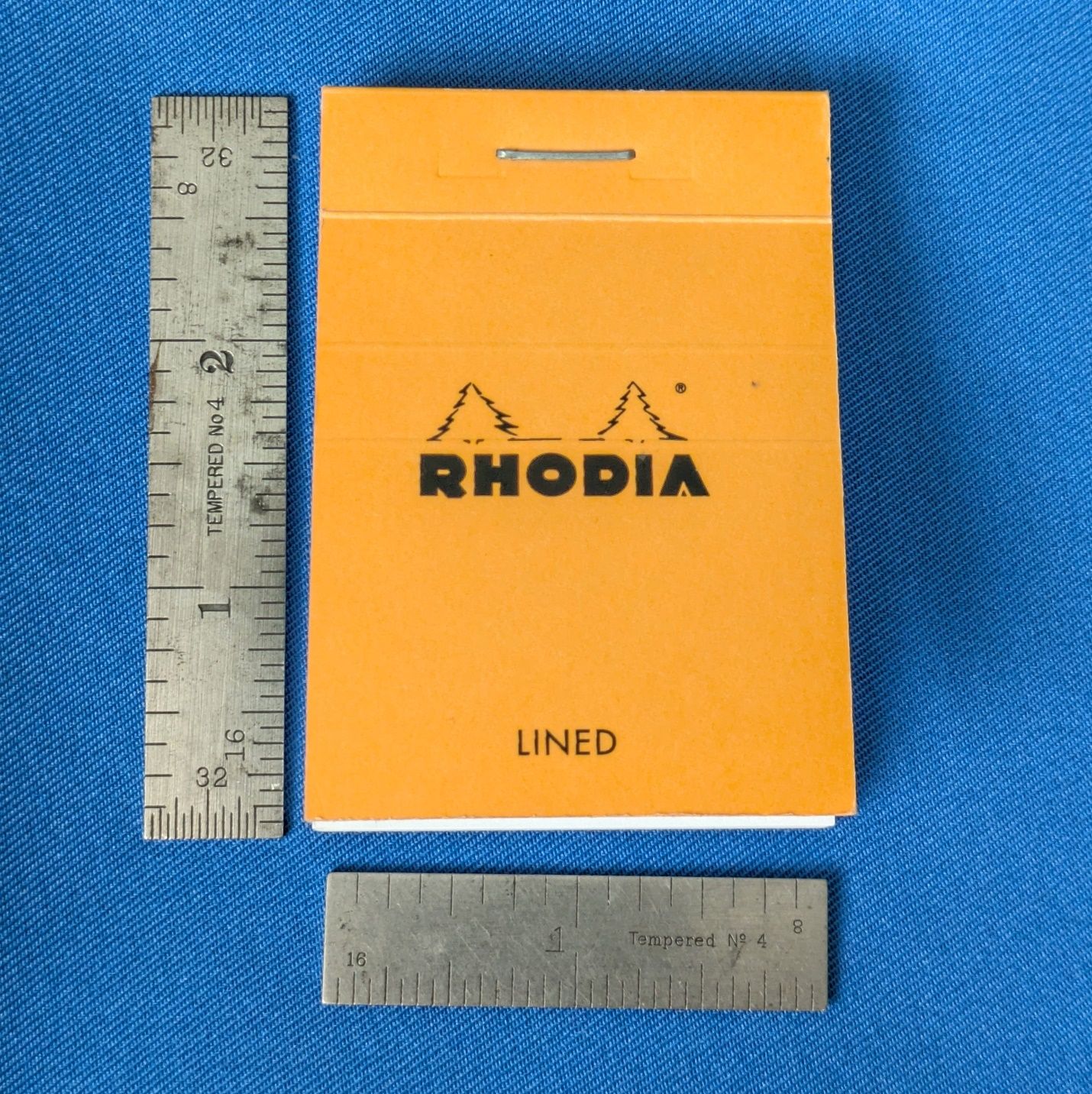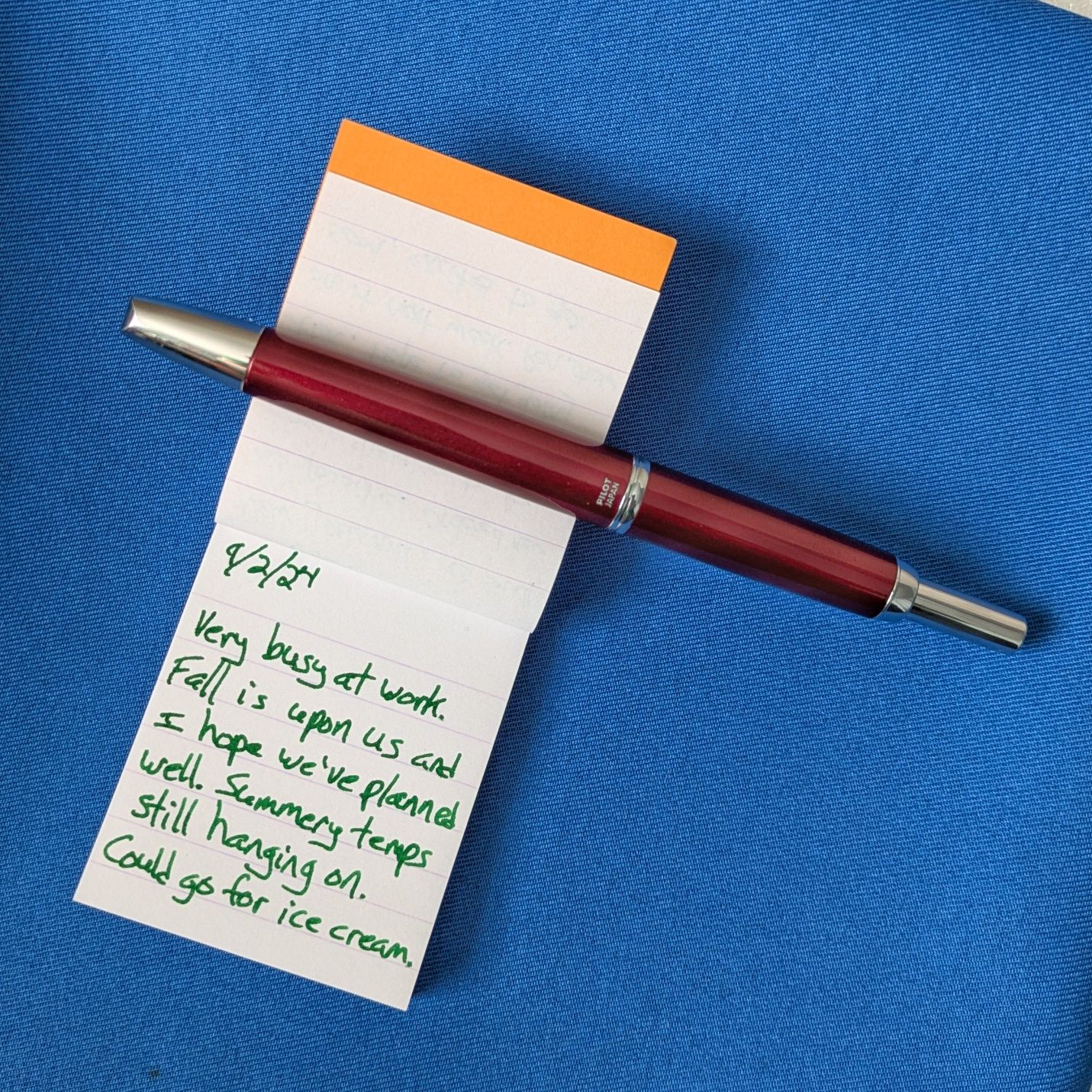I know something that serves as an obstacle to journaling is looking at a page with nothing on it and wondering how you fill it. Where are the words inside you to go there? Where is the time you can dedicate to it? Brad Dowdy has great advice on this point — start small.
Based on your writing style, think of the smallest piece of paper or other media you can comfortably write a certain number of words on. It could be 10 words on an index card or 50 words on the back of a stamp. Use whatever’s on your mind or in your heart to fill that space. There you go, that’s a journal entry.
For as practical and usable as this idea is, I never went that way with journaling. The other day, however, I got reconnected to it.
The Brooklyn Art Library had an exhibit called the Sketchbook Project where people would purchase a standard issue 5x7” sketchbook, pick from a list of themes, and then fill the book with pretty much whatever they wanted on that theme. Words, art, collage, whatever. My brother participated and when the exhibit traveled to Boston (in an Ape, no less) I got to see many different sketchbooks.

 Brooklyn Art Library Sketchbook Project in Boston, October 2019
Brooklyn Art Library Sketchbook Project in Boston, October 2019
I was amazed at the variety of ideas and styles people had worked into these small sketchbooks. In the following days I considered doing it myself for the next go round, but wondered if I could come up with enough to fill that space. Then I saw there was another option — the Tiny Sketchbook Project. This was more my speed. How tiny is a tiny sketchbook? Well, you may be familiar with a Rhodia no. 10, the smallest pad they make. It measures 2” by 2.9”.
 I knew these tiny machinist rulers would come in handy some day.
I knew these tiny machinist rulers would come in handy some day.
The tiny sketchbook is smaller than that. 2.33” by 1.66” to be precise.
 Little Rhodia never felt so superior in its life.
Little Rhodia never felt so superior in its life.
What’s shown here are sheets of paper I cut to size and folded together as a mockup for how I’d write out the contents and then bind them into the tiny cover, replacing the original pages. It’s not much space to work with but boundaries can often serve to spark new routes rather than stop us in our tracks.
Around the time I was thinking about what to put in the sketchbook, I’d been reading a writer’s workbook that presented ideas and creative exercises based around the work and practices of several famous authors. One of them said they set strict rules when writing and that it was more liberating than working without rules because too much freedom could be a trap of its own. One of the exercises was along the line of write a few sentences to tell a brief story, but you can only use two and five letter words. Adding a complication to the writing made you work in a way you weren’t accustomed to. This intrigued me since it could help find an idea for the tiny sketchbook. If writing space was small and finite, why not make the writing itself small and finite? I decided to write a dialogue between two people where the sentences were either three or six words long. The choice of three and six words came from an idea about something said in the dialogue.
The dialogue was only 26 sentences (13 per person) with each sentence being three or six words. I played around with how to space it out so it would read like a regular book on the small pages, which was not as straightforward as it might seem. Thinking back on this reminds me that making the book, even though it’s so small, was filled with trial & error, frustration, and seeking out the right pair of scissors.
While the finished sketchbook is presumably still somewhere with the Art Library’s exhibit, I kept the mockup. Given its size, it got tossed in this box or that folder, left in a drawer, and generally forgotten about. As is often the case, I was cleaning and organizing all the accumulated stationery stuff in my bedroom recently and rediscovered something. This time it was the tiny sketchbook.
I hadn’t seen it in a few years and was surprised all over again at the tiny-ness. Since I’d also been culling my notebook stash lately, I directly connected the tiny sketchbook to the Rhodia No. 10. If I was able to write a cohesive sequence on such small pages before, why not try out the Rhodia as diary? One page with seven little lines to use for whatever is top of mind this day.

The goal is not to make profound observations or pour my heart out, though one could do it in this space if you choose your words well. Instead, it’s just trying to travel the shortest distance between wanting to record something about the day and actually writing those things down. Starting small and staying compact lowers the barrier of entry. It makes the act less intimidating. More than that, it’s fun, which is a bigger motivation than anything else. Big is small, complex is simple, and what you see above is a journal entry.
 What’s What 9/1/24
Pen Show Shopping List
This weekend sees the return of the Commonwealth Pen Show just outside Boston after it was canceled last year due to an issue on the part of the
What’s What 9/1/24
Pen Show Shopping List
This weekend sees the return of the Commonwealth Pen Show just outside Boston after it was canceled last year due to an issue on the part of the